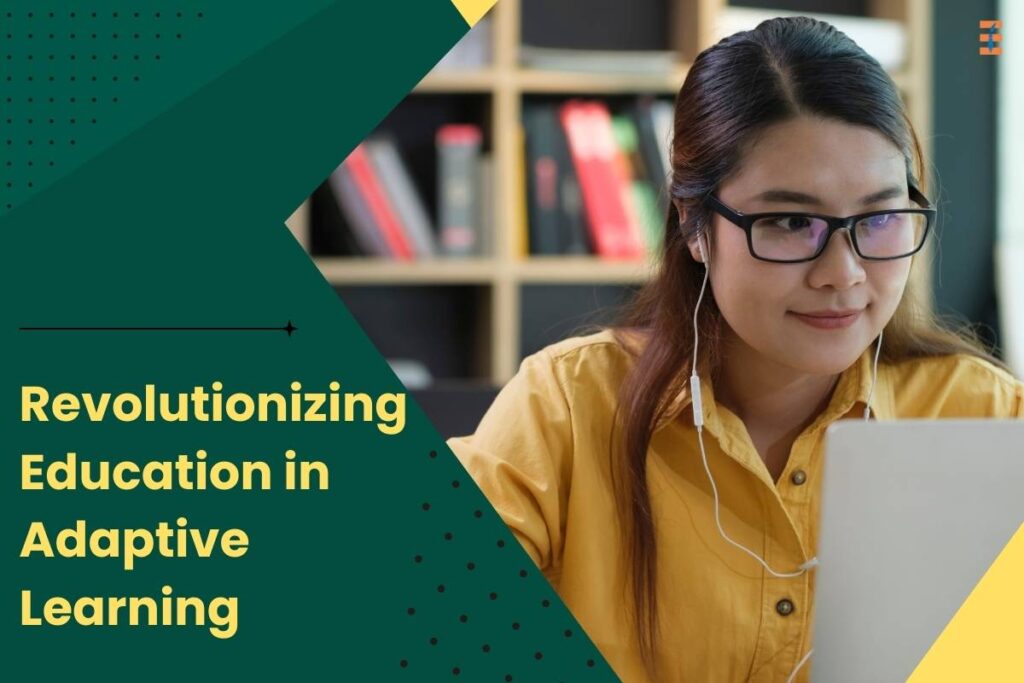In the rapidly evolving landscape of education, the integration of technology has become a catalyst for transformative change. One such innovation that stands at the forefront is Adaptive Learning (AL). This dynamic approach tailors educational experiences to individual learners, leveraging personalized pathways to mastery. As we delve into the realm of Adaptive Learning, we explore its origins, key principles, benefits, challenges, and the promising future it holds for shaping a more effective and inclusive educational paradigm.
Origins of Adaptive Learning: A Brief Evolution
It traces its roots to the early days of computer-assisted instruction. The concept gained momentum in the 1970s when pioneers like Gordon Pask envisioned machines that could adapt to learners’ responses, providing a customized educational journey. However, it is in the digital age, with the proliferation of sophisticated algorithms and big data analytics that it has truly come into its own.
Key Principles of Adaptive Learning: Personalization and Beyond
At its core, It revolves around personalization. It goes beyond the one-size-fits-all model, recognizing that each learner possesses a unique set of strengths, weaknesses, and learning styles. The key principles include:
1. Individualized Learning Paths
Its algorithms analyze a learner’s performance, identifying strengths and areas that need improvement. Subsequently, customized learning paths are created, ensuring that each student progresses at their own pace.
2. Real-Time Feedback

Immediate feedback is a cornerstone of AL. Learners receive instant insights into their performance, allowing for timely adjustments and targeted interventions.
3. Data-Driven Decision Making
Harnessing the power of data, Adaptive Learning systems continuously collect and analyze information. Educators can use this data to make informed decisions about instructional strategies, curriculum design, and individualized support.
4. Engagement through Interactivity
Its platforms often incorporate interactive elements such as simulations, games, and multimedia resources, enhancing engagement and making learning more enjoyable.
Benefits of Adaptive Learning: Unlocking Educational Potential
The adoption of Al comes with a multitude of benefits that contribute to a more effective and student-centric educational environment:
1. Personalized Mastery
Students can achieve mastery in each concept before moving on, ensuring a solid foundation for more advanced topics. This personalized approach reduces the risk of learning gaps.
2. Flexibility in Learning

Adaptive Learning accommodates different learning styles and paces, providing flexibility that caters to the diverse needs of students. Whether fast learners or those requiring additional support, each student can thrive.
3. Efficient Use of Time
By focusing on areas that need improvement, it optimizes the use of time. Students can spend more time on challenging concepts while swiftly progressing through familiar topics.
4. Data-Driven Insights
Educators gain valuable insights into student performance and engagement through detailed analytics. This data-driven approach facilitates targeted interventions, enabling timely support for struggling learners.
5. Enhanced Motivation
The interactive and dynamic nature of Adaptive Learning can boost student motivation. Immediate feedback, gamified elements, and real-world applications create an engaging learning experience.
Challenges and Considerations: Navigating the Educational Landscape
While the promises of Adaptive Learning are enticing, challenges and considerations exist on the path to widespread adoption:
1. Technological Infrastructure
Successful implementation requires robust technological infrastructure, including reliable internet access and devices for all students. Bridging the digital divide is crucial for equitable access.
2. Training for Educators

Teachers play a pivotal role in facilitating it. Providing comprehensive training is essential to empower educators in utilizing the technology effectively and interpreting data insights.
3. Data Privacy and Security
As it relies on collecting and analyzing student data, ensuring robust privacy measures is paramount. Institutions must establish clear policies to protect sensitive information.
4. Customization vs. Standardization
Balancing the need for customization with maintaining standard educational benchmarks is a delicate task. Striking this balance ensures that it aligns with broader educational goals.
The Future of Adaptive Learning: A Paradigm Shift in Education
As technology continues to advance, the future of Al appears promising. The ongoing development of artificial intelligence (AI) and machine learning algorithms holds the potential for even more sophisticated personalization. Predictive analytics may anticipate learning needs, and virtual reality could further enhance the immersive learning experience.
Moreover, it is not limited to traditional academic settings. Corporate training programs, language learning platforms, and professional development initiatives are increasingly incorporating adaptive technologies to cater to individual learner needs.
In conclusion, Adaptive Learning stands as a beacon of educational innovation, steering the course toward a more inclusive, personalized, and effective learning experience. Embracing this paradigm shift requires collaboration among educators, policymakers, and technology developers to ensure that the benefits of AL are realized by students worldwide. As we navigate the evolving landscape of education, the dynamic interplay between technology and pedagogy heralds a future where learning adapts to the learner, unlocking untold potentials and shaping a generation of lifelong learners.
Also Read: Problem-Based Learning: Fostering Critical Thinking and Application










